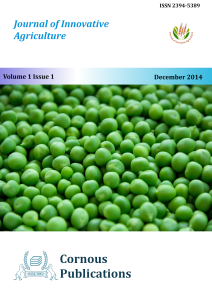
Journal of Innovative Agriculture
Peer Reviewed Open Access Journal
ISSN: 2394-5389 NAAS: 4.05
Submit Manuscript
Peer Reviewed Open Access Journal
ISSN: 2394-5389 NAAS: 4.05
Submit ManuscriptOPEN ACCESS | Published on : 30-Dec-2014 | Doi : 10.37446/jinagri/1.1.2014.1-6 | Pages : 1-6
OPEN ACCESS | Published on : 30-Dec-2014 | Doi : 10.37446/jinagri/1.1.2014.7-15 | Pages : 7-15
OPEN ACCESS | Published on : 30-Dec-2014 | Doi : 10.37446/jinagri/1.1.2014.16-21 | Pages : 16-21
OPEN ACCESS | Published on : 30-Dec-2014 | Doi : 10.37446/jinagri/1.1.2014.22-30 | Pages : 22-30
OPEN ACCESS | Published on : 30-Dec-2014 | Doi : 10.37446/jinagri/1.1.2014.31-36 | Pages : 31-36
